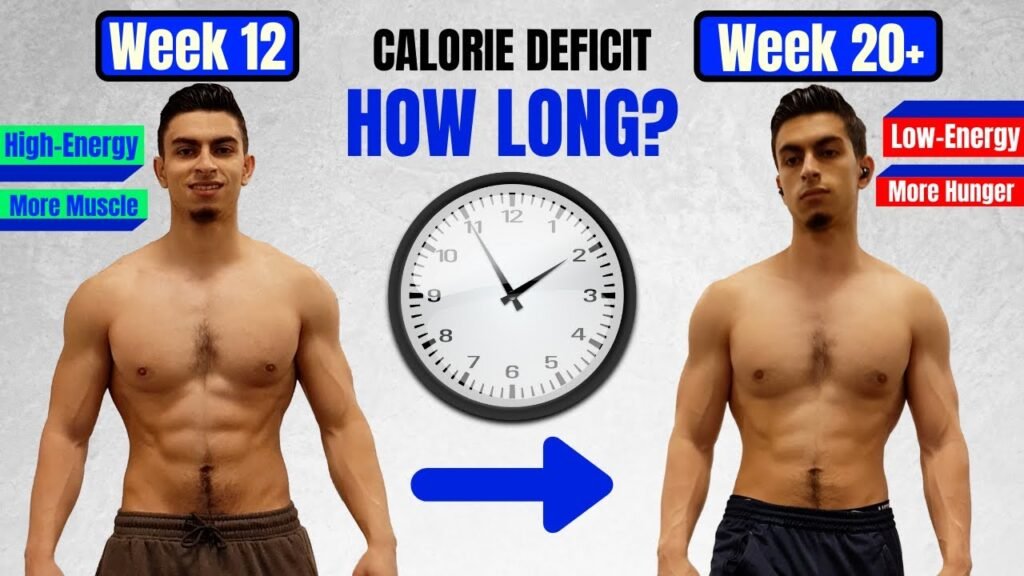
Understanding Muscle Loss During Caloric Deficits
Introduction
Have you ever felt like losing weight was a bit of a juggling act? On one hand, you’re excited about dropping those extra pounds, but on the other, there’s a crucial piece to the puzzle that often gets overlooked: keeping your muscle mass intact while you slim down. It’s not just about that number on the scale; it’s about reshaping your body in a way that truly supports your overall health. In this guide, we’ll explore why preserving muscle is so vital during your weight loss journey. You’ll walk away with practical insights from nutritionists and trainers that can help you navigate the path to a healthier you, all without sacrificing the hard work you’ve put into building your muscles.
—
Understanding Muscle Loss During Caloric Deficits
The Science Behind Muscle Loss
Let’s dive into the nitty-gritty! When you cut calories to shed weight, muscle loss often tags along for the ride. Research shows that losing muscle can happen whether you’re zooming down the scale quickly or taking a more leisurely approach. Here’s the kicker: muscle isn’t just about how you look; it’s a key player in keeping your metabolism humming. As your muscle shrinks, so does your metabolic rate, making it trickier to maintain weight loss over time.
Key Takeaway: Shift Your Focus from Weight Loss to Body Composition
Instead of being fixated on that number flashing back at you from the scale, let’s change gears and focus on your body composition. Prioritizing the preservation of lean muscle will not only rev up your metabolism but also contribute to your overall health.
—
The Role of Protein in Muscle Preservation
Optimal Protein Intake
Now, let’s talk protein—your muscle’s best friend! To keep your muscles happy while losing weight, it’s recommended to consume between 1.2 and 1.5 grams of protein for every kilogram of your body weight each day. If you’re hitting the gym hard, that number might even go up to over 2 grams!
How Protein Helps
– Supports Muscle Repair and Growth: Think of protein as the building blocks for your muscles, aiding recovery after those sweat-filled workouts.
– Boosts Satiety: A higher protein diet can help you feel fuller longer, making it easier to stick to your calorie goals.
– Increases Thermogenesis: Your body uses more energy to digest protein than fats or carbs, giving your metabolism that little extra push!
Practical Protein Tips
– Incorporate Protein-Rich Foods: Load your plate with lean meats, fish, Greek yogurt, or plant-based options like legumes. Protein powders are an option too if you need a boost!
– Distribute Protein Intake: Try to spread your protein consumption evenly throughout the day to maximize muscle-building opportunities.
—
Importance of Resistance Training
Engaging in Strength Training
Strength training is a game changer when it comes to keeping your muscle mass during a calorie deficit. According to the CDC, adults should aim for at least two days a week of resistance training. This will not only fight off age-related muscle loss—sarcopenia, which can creep in after 30—but it also gets your body primed to hold onto muscle.
Resistance Training Benefits
– Stimulates Muscle Protein Synthesis: Every time you lift weights or do body-weight exercises, you’re activating pathways that are critical for building or preserving muscle.
– Supports Bone Health: Strength training can boost your bone density, lowering the risk of fractures, especially in older adults.
– Boosts Metabolic Rate: The more muscle you keep, the more calories your body burns even when you’re just chilling!
Building Your Strength Training Routine
– Choose Compound Exercises: Target multiple muscle groups with movements like squats, deadlifts, and bench presses.
– Mix it Up: Keep your workouts fresh! Use a combination of resistance bands, body weights, and free weights to give your muscles a challenge.
—
Additional Factors Affecting Muscle Preservation
Age, Gender, and Genetics
It’s good to remember that factors like age, gender, and genetics can impact how you lose muscle. Women and men experience muscle loss differently, often due to hormonal changes, and older adults are more vulnerable to muscle decay.
Implications for Different Groups
– Older Adults: Focus on strength training and getting enough protein to combat sarcopenia.
– Younger Adults or Athletes: Make sure you’re loading up on higher protein and complex carbs to fuel your performance and speed up recovery.
—
How to Apply This Information
Ready to put these tips into action? Here’s how you can get started:
1. Consult a Nutritionist: Find a friendly expert to help customize your protein and dietary needs based on your daily activities and weight goals.
2. Establish a Balanced Workout Regimen: Aim for at least two strength training sessions each week, paired with cardio workouts to enhance fat loss while keeping your muscles intact.
3. Stay Hydrated: Water is your workout buddy! Proper hydration helps with performance and recovery.
4. Prioritize Sleep: Don’t underestimate the power of a good night’s sleep—it’s critical for recovery and your overall well-being.
—
Conclusion
So, maintaining muscle while you lose weight is not just a matter of cutting calories; it’s a holistic approach that involves being mindful of what you eat and how you exercise. By paying attention to your protein intake and engaging in regular strength training, you’re setting yourself up for success in achieving a healthier body composition and sustaining your metabolism. It’s not just about losing weight; it’s about building a stronger, more resilient you! I’d love to hear about your journey—feel free to share your thoughts or experiences on weight loss and muscle preservation in the comments. And don’t forget to check out our other articles for even more tips on living your healthiest life!
Hashtags: #muscle #protein #weight #body #loss #training #more #about #strength #like #building #while #just #muscles #adults
